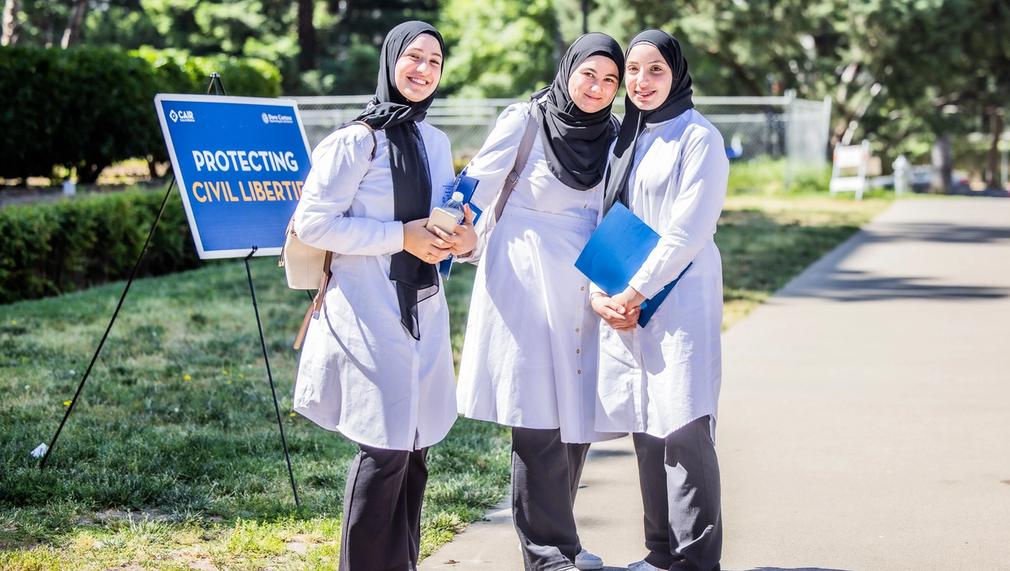Gamechangers: Empowering Immigrant Youth, Building Legacies
Gamechangers is a training program that aims to empower Muslim immigrant youth to critically understand their world, effectively challenge injustice, and build legacies of positive change in their communities. Through a series of training sessions led by young professionals and activists, CAIR-LA will help immigrant students understand the social and political context of their own experiences, to explore their community history, and gain practical tools to develop leaders who are equipped to challenge the status quo.

What is the primary issue area that your application will impact?
Immigrant and Refugee Support
In which areas of Los Angeles will you be directly working?
County of Los Angeles
City of Los Angeles
In what stage of innovation is this project, program, or initiative?
Expand existing project, program, or initiative
What is your understanding of the issue that you are seeking to address?
For immigrant adolescents in the US, balancing American culture with their ethnic culture can be a difficult endeavor. Many children struggle to reconcile between the two differing sets of values, beliefs, and traditions that exist within and outside their household. This dissonance may lead to an identity crisis that causes feelings of confusion, isolation, and loneliness. These issues are compounded by xenophobia and Islamophobia in schools. According to a CAIR survey of Muslim students in 2021, over half of respondents reported feeling unsafe, unwelcome, or uncomfortable at school because of their Muslim identity. Navigating such challenges in a new, unfamiliar environment has resulted in students feeling lost and powerless. This has inhibited them from being able to productively engage with their communities and confidently create positive change. Yet CAIR-LA knows that with the right tools, these immigrant students can be gamechangers in both social and political spheres.
Describe the project, program, or initiative this grant will support to address the issue.
Gamechangers is a social justice training program for Muslim immigrant high school students that equips participants with the tools to critically understand their world, effectively challenge injustice, and build legacies of positive change in their communities. CAIR-LA will train students on the topics of identity building, civic engagement, and leadership development to prepare them to become gamechangers in both social and political spheres. This program will be implemented in partnership with local mosques that are attended by immigrants and refugees. Mosques will provide outreach to the immigrant communities and will host trainings. Each training unit consists of three sessions. The topics covered during those sessions are: 1. Building Identity 2. Understanding Stereotypes, Culture, and Knowledge 3. Navigating the American Context 4. Connecting Cultural Roots 5. Engaging Civically 6. Developing Community Organizing By the end of the training unit, students will be able to understand the value of building identity from personal experiences, to explore the social and political context of American life, and gain practical tools to become leaders who are equipped to create beneficial change in their communities.
Describe how Los Angeles County will be different if your work is successful.
California is the most ethnically and racially diverse state in the country. The percentage of foreign-born residents in California is double the rest of the country. Nearly half of all children (48%) in California have at least one immigrant parent. In Los Angeles, that percentage shoots up to nearly 60%. As such, the wellbeing of immigrants will determine the future of LA. By implementing this program, immigrant youth in LA will be empowered with the knowledge and tools to enact change and present solutions to the pressing needs of LA's most vulnerable communities. This will help build a stronger democracy and a stronger LA. The program is scalable to multiple locations. With more funding, we will be able to hold more trainings to benefit more students. The numbers listed in the direct beneficiaries section (90 students) are a conservative estimate of the attendees in the three training units that will occur during the grant period.
What evidence do you have that this project, program, or initiative is or will be successful, and how will you define and measure success?
Participants of the Gamechangers trainings will engage in hands-on activities such as creating posters and giving presentations on researched bills and relevant information. These activities will allow the trainers to gauge the participants' understanding of the content presented in the sessions. Furthermore, students will be given pre- and post- surveys to measure the program's effect on its attendees. The surveys ask students to rate their understanding of the various topics presented during the training sessions (e.g. how to effectively engage different levels of government, how stereotypes can negatively impact people, etc.). The surveys also allow students to indicate which aspects of the sessions were most beneficial, which aspects needed improvement, and any suggestions on how to improve the program.
Approximately how many people will be impacted by this project, program, or initiative?
Direct Impact: 90
Indirect Impact: 500
Describe the role of collaborating organizations on this project.
CAIR-LA will partner with Hawthorne Mosque and Lomita Mosque to recruit and enroll immigrant high school age students to the Gamechangers program. These two mosques will collaborate with other immigrant-majority mosques in Southern California to recruit students using various methods, including but not limited to social media outreach, distributing flyers and posters, posting links on their websites, and Friday prayer announcements. Gamechanger sessions will be held at the mosques. CAIR-LA may partner with other mosques in the duration of this grant. Due to the wide geographical span of the LA region, we've centralized programming to these particular areas due to larger immigrant populations